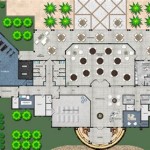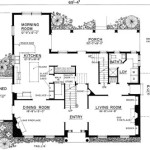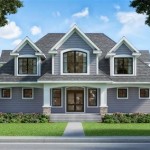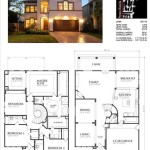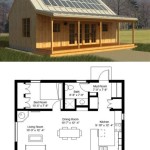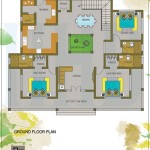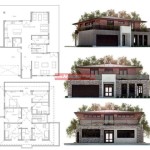Small Modern House Building Plans: Efficiency and Style in Compact Living
The increasing demand for sustainable and affordable housing has led to a surge in interest in small modern house building plans. These plans prioritize efficient space utilization, contemporary design aesthetics, and cost-effectiveness, appealing to individuals, small families, and those seeking to minimize their environmental footprint. Developing a successful small modern house requires careful planning, an understanding of design principles, and adherence to building codes. This exploration details key considerations for creating functional and stylish small-scale living spaces.
Understanding the Principles of Small Modern House Design
Small modern house design is not simply about shrinking a traditional house plan. It involves a fundamental shift in design philosophy, focusing on maximizing every square foot. Open floor plans, multi-functional spaces, and integrated storage solutions are core elements. The emphasis is on creating a feeling of spaciousness and light within a limited footprint.
One crucial aspect is the efficient use of vertical space. High ceilings, loft areas, and strategically placed windows can significantly enhance the feeling of openness. Additionally, the orientation of the house on the lot is paramount. Maximizing natural light and ventilation reduces the need for artificial lighting and air conditioning, contributing to energy efficiency and a healthier indoor environment.
Another key factor is the selection of building materials. Lightweight materials, such as wood framing and engineered wood products, can reduce construction costs and environmental impact. The use of sustainable and locally sourced materials further enhances the eco-friendliness of the project. Interior finishes should be chosen to complement the overall design aesthetic and contribute to the sense of spaciousness. Light colors and minimalist decor are often preferred in small modern houses.
Integration with the outdoor environment is also important. Decks, patios, and gardens extend the living space and provide opportunities for outdoor relaxation and recreation. Large windows and sliding glass doors create a seamless connection between the interior and exterior, further enhancing the feeling of spaciousness and connection to nature.
Furthermore, accessibility should be a primary consideration. Universal design principles, such as wider doorways, ramps, and accessible bathrooms, can make the house more comfortable and usable for people of all ages and abilities. Planning for future needs ensures that the house remains functional and adaptable over time.
Key Considerations When Choosing a Small Modern House Building Plan
Selecting the right building plan is a crucial step in the construction process. Several factors must be considered to ensure that the plan meets the homeowner's needs and budget. The first consideration is the size and layout of the house. The plan should provide adequate living space for the intended occupants while maximizing efficiency. Open floor plans are common in small modern houses, as they create a sense of spaciousness and allow for flexible use of the space. The number of bedrooms and bathrooms should be carefully considered based on the needs of the occupants. The layout should also be designed to maximize natural light and ventilation.
The style of the house is another important consideration. Modern house designs typically feature clean lines, minimalist decor, and a focus on functionality. The exterior of the house should blend seamlessly with the surrounding environment. The building materials used should be durable, sustainable, and aesthetically pleasing. The roof design is also an important consideration. Flat roofs are common in modern houses, but they may require more maintenance than sloped roofs. Sloped roofs can be designed to accommodate solar panels or rainwater harvesting systems.
The cost of construction is a critical factor in the decision-making process. The building plan should be designed to minimize construction costs without compromising quality or functionality. The use of prefabricated components and modular construction techniques can significantly reduce construction time and costs. The selection of building materials should also be based on cost-effectiveness. The plan should also include detailed specifications for all materials and finishes to avoid unexpected expenses during construction. Obtaining multiple quotes from qualified contractors is essential to ensure that the project stays within budget.
Finally, compliance with local building codes and regulations is essential. The building plan should be reviewed by a qualified architect or engineer to ensure that it meets all applicable codes and regulations. Permits must be obtained before construction can begin. Failure to comply with building codes can result in costly delays and fines. The plan should also be designed to meet the requirements of any homeowner's associations or neighborhood covenants.
Strategies for Maximizing Space and Functionality
The success of a small modern house hinges on efficient space utilization. This requires meticulous planning and the implementation of innovative design strategies. Multi-functional spaces are paramount. For example, a living room can double as a dining area or home office. Furniture should be chosen for its versatility and ability to serve multiple purposes. A sofa bed can provide additional sleeping space for guests, while a coffee table with storage can help keep the living room organized.
Built-in storage solutions are essential for maximizing space. Custom cabinets, shelves, and drawers can be integrated into walls and other unused spaces. These solutions can be designed to accommodate specific storage needs and to blend seamlessly with the overall design aesthetic. Under-stair storage, hidden compartments, and loft areas can provide additional storage space without sacrificing living space.
The use of vertical space is another key strategy. High ceilings can create a sense of spaciousness and allow for the installation of loft areas. Loft areas can be used as bedrooms, offices, or storage spaces. Vertical gardens can also add visual interest and create a connection to nature. Wall-mounted shelves and cabinets can provide additional storage space without taking up floor space. The placement of mirrors can also create the illusion of more space and reflect light throughout the house.
Color schemes and lighting play a crucial role in creating a sense of spaciousness. Light colors tend to make rooms appear larger and more open. The use of natural light is also essential. Large windows and skylights can bring natural light into the house, reducing the need for artificial lighting. The placement of lighting fixtures should be carefully considered to ensure that the house is well-lit and that there are no dark corners. Dimmable lighting can also create a more flexible and comfortable living environment.
Appliances and fixtures should be chosen for their compact size and energy efficiency. Smaller appliances, such as countertop dishwashers and compact refrigerators, can save space in the kitchen. Tankless water heaters can also save space and energy. Low-flow toilets and showerheads can conserve water. Energy-efficient appliances and fixtures can also reduce utility bills and environmental impact.
The integration of smart home technology can also enhance the functionality of a small modern house. Smart lighting, thermostats, and security systems can be controlled remotely, making it easier to manage the house and save energy. Voice-activated assistants can also provide hands-free control of various functions. Smart home technology can also enhance security and provide peace of mind.
Careful consideration must be given to the layout of the kitchen and bathroom. These are often the most space-intensive rooms in the house. In the kitchen, a galley layout or a U-shaped layout can maximize efficiency. In the bathroom, a corner shower and a wall-mounted sink can save space. The use of pocket doors can also save space in both the kitchen and the bathroom.
Outdoor living spaces, such as decks and patios, can extend the living space of a small modern house. These spaces can be used for dining, relaxing, and entertaining. The use of outdoor furniture and accessories can create a comfortable and inviting outdoor living environment. A small garden or a few potted plants can also add visual interest and create a connection to nature.
In conclusion, maximizing space and functionality in a small modern house requires careful planning, innovative design strategies, and a focus on efficiency. By implementing these strategies, it is possible to create a comfortable, stylish, and functional living space in a compact footprint. The principles of small modern house design can be applied to a variety of different architectural styles and budgets, making it a versatile and appealing option for a wide range of homeowners.

Casita Plan Small Modern House 61custom Contemporary Plans

Small Front Courtyard House Plan 61custom Modern Plans

18 Small House Designs With Floor Plans And Decors

Modern 2 Bedroom House Plan 61custom Contemporary Plans Courtyard Floor

Tiny House Plan Examples

Small House Plans 623044929687720853 A8a Modern Contemporary
Est House Plans To Build Simple With Style Blog Eplans Com

Single Story Modern House Plans Floor Designs Houseplans Com

27 Adorable Free Tiny House Floor Plans Craft Mart

18 Small House Designs With Floor Plans And Decors


